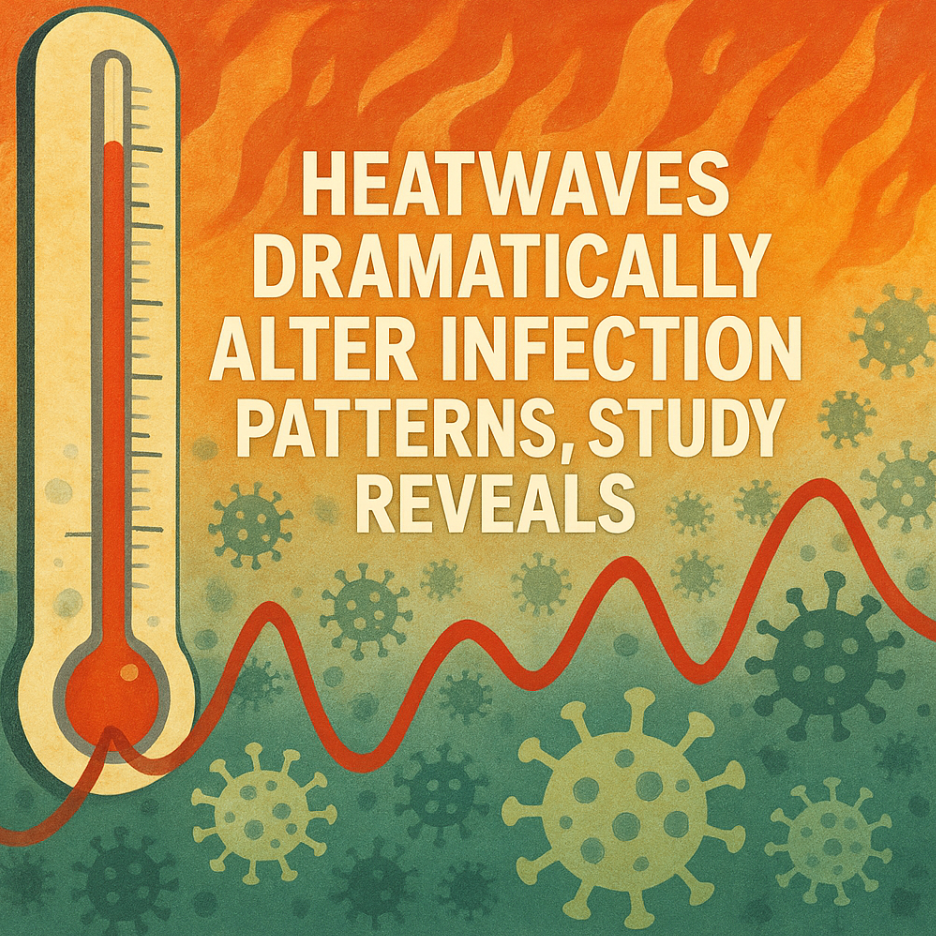Rising Temperatures Rewrite the Rules of Infection Spread, New Study Finds
- arunaditya1
- Jun 10
- 2 min read
Trinity College Dublin, June 4 2025

Disease transmission patterns are undergoing transformation because of heatwaves. Trinity College Dublin scientists reveal in a new publication in PLOS Climate that heatwave timing and intensity alongside duration significantly boosts infections beyond what current models predict.
Why Heatwaves Matter for Disease
Traditional climate science recognizes how average temperatures impact viruses and bacterial activity but has neglected the effects of sharp temperature fluctuations. Those extreme events have been an afterthought. The increasing regularity and intensity of heatwaves makes it essential that we can’t afford to overlook them. Pakistan reached temperatures close to 50 °C last month as South Africans experienced near-freezing conditions. These weather fluctuations create genuine threats to public health.
A Tiny Creature Reveals Big Secrets
PhD candidate Niamh McCartan together with her team used the water flea Daphnia magna and its microsporidian parasite Ordospora colligata to decipher these impacts. Scientists use this particular host-pathogen relationship as a primary model for researching diseases transmitted through the environment. By systematically varying: Heatwave amplitude (how many degrees above normal), Duration (from brief spikes to sustained stretches) Baseline temperature, Timing of pathogen exposure, they created 64 unique heatwave scenarios.
Their findings were striking: Specific temperature combinations resulted in parasite loads increasing by up to thirteen times compared to the effects of less extreme temperature variations. Cold temperature drops influenced infections through completely different mechanisms that tended to be less effective.
Beyond the Lab: Why This Matters
McCartan observes that simple models fail to capture essential complexities. The complex temperature network forms the foundation for real-world disease outbreaks. COVID-19 in Summer 2022: Estimates show that heatwaves might have prevented 70% of the cases from occurring.
Mosquito-borne diseases: Europe's rising temperatures enable dengue, Zika and malaria vectors to establish populations in previously inhospitable regions.
Our disease prediction models and public health responses will experience significant improvements when we incorporate heatwave characteristics such as amplitude, duration and timing into forecasting systems.
Ripple Effects on Freshwater Ecosystems
These findings matter for ecology, too. Daphnia populations regulate algae growth but when disease and heatwaves cause their numbers to drop algae blooms surge which damages water quality and affects the species that rely on it. Studying how diseases spread among small aquatic organisms during heatwaves provides valuable knowledge for safeguarding entire aquatic ecosystems.
A Call for Smarter Models
Climate change isn’t average. It’s extremes—sudden, fierce, unpredictable. Our disease models need to reflect real-world conditions to stay ahead of emerging threats. We can predict and prevent upcoming outbreak waves effectively by tracking the full range of temperature fluctuations.
As heatwaves continue turning up the heat globally, it’s clear: Our disease prediction systems must now become advanced enough to handle extreme weather conditions.
References:
McCartan, N., et al. (2025) Impact of heatwave amplitude, duration, and timing on parasite fitness at different baseline temperatures. PLOS Climate. doi.org/10.1371/journal.pclm.0000632.



Comments